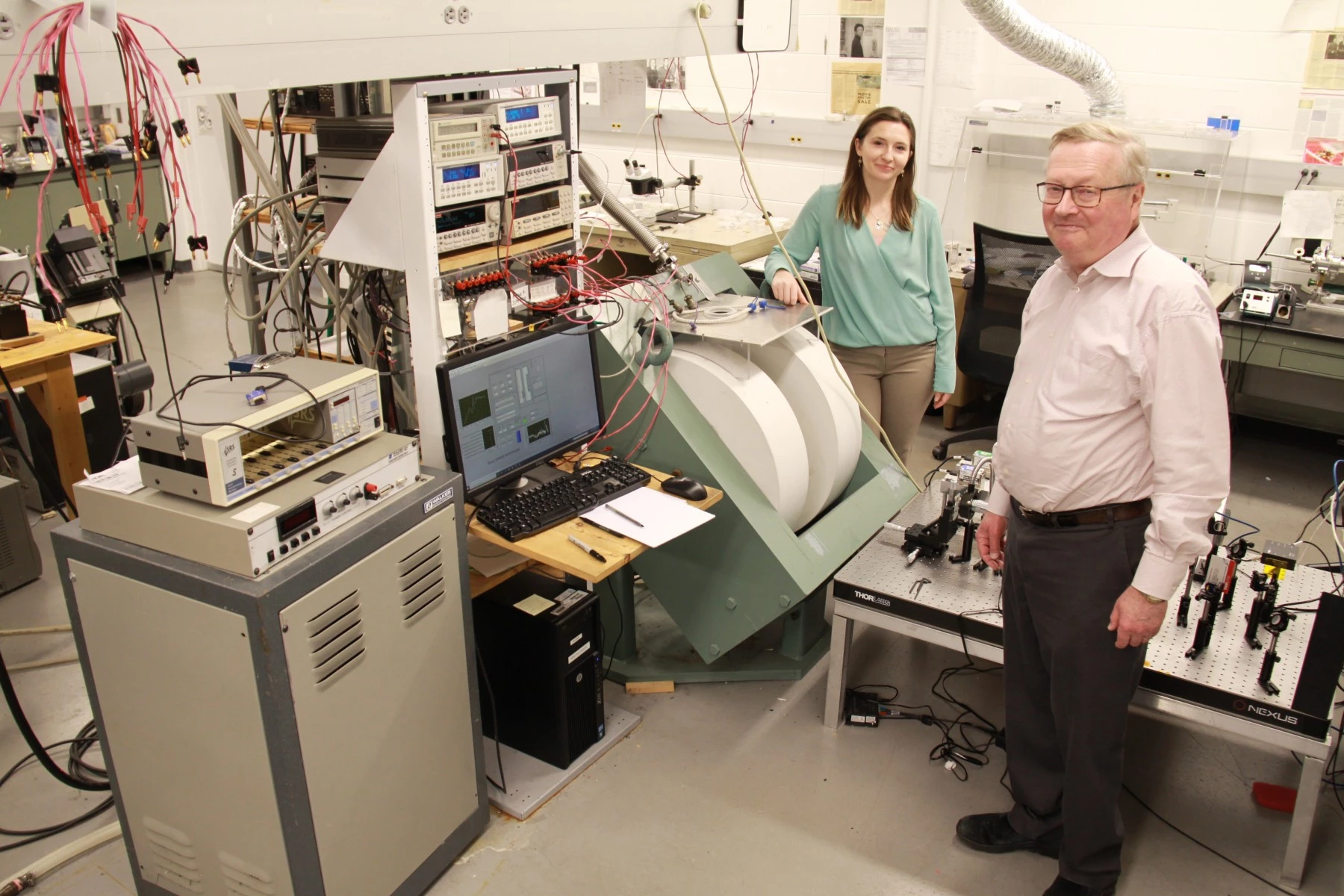The discovery was founded on the useful, but confusing idea of quasiparticles, which act as if they exist, but really don't. There are only three types of particle in a solid: protons, neutrons and electrons. When packed together in a solid, these individual particles are extraordinarily difficult to predict, since the motion of each is directly acted on by all the others in a massively chaotic multi-body problem.
But despite this insane complexity, there are observable emergent patterns in these systems that behave in much simpler ways, as if they're particles that have no interactions wth everything around them. Researchers have found a number of these in different systems, and have called them quasiparticles. They're effectively mathematical tools that allow scientists to work with simple behavior patterns that arise from chaotic systems.
The relevant quasiparticle in this case is the ferron, which was theorized to exist in ferroelectric materials, a subset of piezoelectric materials. Piezoelectrics are materials that generate AC voltage when vibrated or subjected to stress, or which vibrate when subjected to an external AC voltage. Some microphones, for example, use piezoelectric components to translate sound waves into electrical signals. Ferroelectrics are piezoelectrics that also show an electric polarization that can be reversed by the application of an electric field.
Ferrons, like other quasiparticles, don't exist. But they describe waves that move through ferroelectric materials carrying both heat and polarization, which propagate in predictable ways, even if the reality of each particle in the matrix is much more complicated.
The Ohio State researchers predicted, then sought to confirm the behavior of ferrons, using a common lead zirconium titanate ceramic as their ferroelectric material. Their theory: that when an electric field is used to induce piezoelectric vibrations in a ferroelectric material, those vibrations would modify the material's thermal conductivity.

"We figured out that this change in position of these atoms, and the change of the nature of the vibrations, must carry heat, and therefore the external field which changes this vibration must affect the thermal conductivity,” said Joseph Heremans, professor of mechanical and aerospace engineering, materials science and engineering, and physics – and senior author of a new study published in the journal Science Advances – in a press release.
“The ferron is also sensitive to strain in the solid,” he continued. "Since the ferron carries heat, that makes the amount of heat carried dependent on the electrical field. So we wrote a new theory that relates an external electric field, the strain it induces in a ferroelectric, and ultimately how this strain affects the thermal conductivity.”
Testing confirmed their predictions – albeit in a fairly mild effect. Applying an electrical field to the ceramic produced a 2% difference between its maximum and minimum thermal conductivity. "Any application depends on us finding a material where the effect is much larger," Heremans said. "We are looking for materials that have the right parameters." The theory predicts that there will be other materials capable of changing thermal conductivity by as much as 15%.
The potential outcome here is a new type of heat switch that works without moving parts across a range of temperatures. Most current technologies either rely on mechanical valves, which fail over time, or else they rely on extremely low, or very specific, temperatures to exhibit any useful effects.
That could lead to a radical leap in the efficiency of thermoelectric systems, which convert heat into electricity. “The thermodynamic efficiency of a power generation circuit depends critically on the temperature difference between the hot and the cold thermal reservoirs,” Heremans told IEEE Spectrum. “With a heat switch and a heat storage system, it is possible to keep the temperature of the storage medium far above the average temperature of the hot source and close to its maximum, which can as much as double the thermal efficiency of the system.”
The paper is open access in the journal Science Advances.
Source: Ohio State via IEEE Spectrum






